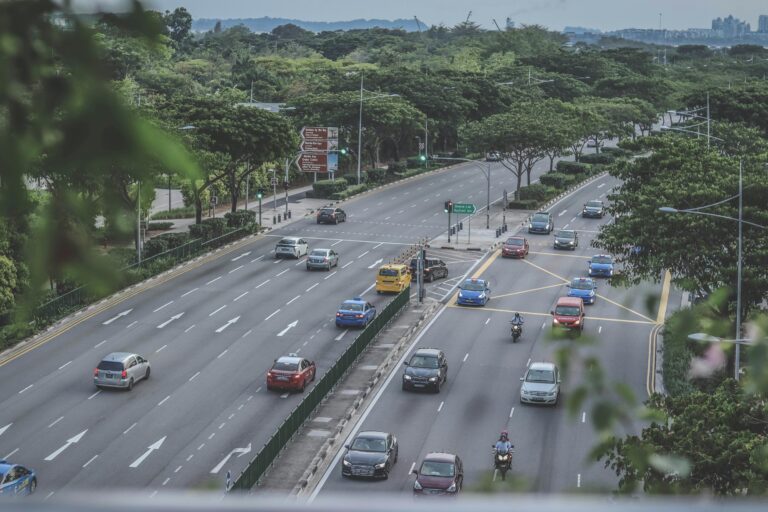
Singapore, renowned for its efficient public transportation system and stringent traffic regulations, still grapples with a range of bad driving habits among its motorists. Despite the country’s advanced infrastructure and rigorous driving tests, certain behaviors persist on the roads, posing risks to safety and causing frustration among road users. This article delves into some of the most prevalent bad driving habits in Singapore and their implications.
Read more driving tips here: https://learntodrivesg.com/
1. Tailgating
Tailgating, or following too closely behind another vehicle, is a common issue on Singapore’s roads. This aggressive driving habit significantly increases the risk of rear-end collisions. Despite traffic laws requiring a safe following distance, many drivers ignore this rule, especially during peak hours or on expressways. The limited reaction time in such scenarios often leads to accidents, making tailgating a dangerous practice.
2. Failure to Signal
Signaling intentions when changing lanes or turning is a basic yet often neglected aspect of driving etiquette. In Singapore, many drivers fail to use their indicators, leading to confusion and potential collisions. This lack of communication disrupts the flow of traffic and can cause abrupt stops or evasive maneuvers, endangering other road users.
3. Speeding
Speeding remains a significant problem despite strict enforcement and the presence of numerous speed cameras across the island. Many drivers exceed the speed limits, especially on expressways and in less monitored areas. Speeding reduces the driver’s ability to react to sudden changes in traffic conditions, increasing the likelihood of accidents and the severity of those that occur.
4. Inconsiderate Parking
Inconsiderate parking, such as occupying multiple spaces, blocking driveways, or parking illegally, is a frequent complaint among Singaporean motorists. This behavior not only causes inconvenience but also disrupts the flow of traffic and can lead to gridlock in busy areas. Illegally parked vehicles also pose a hazard to pedestrians and other drivers, especially in emergency situations.
5. Distracted Driving
With the widespread use of smartphones, distracted driving has become a prevalent issue. Many drivers engage in texting, making calls, or using apps while behind the wheel. This distraction significantly reduces their focus on the road, leading to slower reaction times and a higher likelihood of accidents. Despite laws prohibiting the use of mobile devices while driving, enforcement remains a challenge.
6. Impatient Behavior
Impatience manifests in various forms on Singapore’s roads, from excessive honking and weaving through traffic to ignoring traffic signals. Such behaviors are not only annoying but also dangerous, as they increase the risk of collisions and disrupt the orderly flow of traffic. Impatient drivers often make rash decisions that can endanger themselves and others.
7. Running Red Lights
Running red lights is a serious traffic offense that poses significant dangers to all road users. Despite the presence of red-light cameras at many intersections, some drivers still take the risk, potentially causing severe accidents. This reckless behavior undermines traffic control measures and endangers both pedestrians and other motorists.
Addressing the Issue
Tackling these bad driving habits requires a multifaceted approach involving education, enforcement, and infrastructure improvements. Public awareness campaigns can highlight the dangers of these behaviors and promote safer driving practices. Enhanced enforcement, including more frequent patrolling and stricter penalties, can deter would-be offenders. Additionally, improving road infrastructure, such as clearer signage and better-designed intersections, can help mitigate some of these issues.
Characteristics of a Good Driver: Keys to Safe and Responsible Driving in Singapore
Driving is a skill that requires not only technical proficiency but also a strong sense of responsibility and awareness. Good drivers are those who consistently exhibit behaviors that ensure their safety and the safety of others on the road. Here are some key characteristics that define a good driver.
1. Attentiveness
A good driver is always attentive and focused on the road. They avoid distractions, such as using a mobile phone, eating, or engaging in animated conversations while driving. This focus allows them to react quickly to unexpected situations and make informed decisions.
2. Patience
Patience is a vital trait for good drivers. They understand that traffic delays and slow-moving vehicles are part of driving. Instead of resorting to aggressive behavior, they maintain a calm demeanor and make safe driving decisions without succumbing to road rage.
3. Defensive Driving
Good drivers practice defensive driving. They anticipate potential hazards by keeping a safe distance from other vehicles, observing the behavior of other drivers, and being prepared to react to sudden changes in traffic conditions. This proactive approach reduces the risk of accidents.
4. Knowledge of Traffic Laws
Being well-versed in traffic laws and regulations is crucial for good drivers. They understand and adhere to speed limits, traffic signals, and road signs. This knowledge ensures they navigate roads legally and safely, contributing to the overall flow of traffic.
5. Courtesy
Courtesy is a hallmark of good driving. Good drivers show consideration for other road users by allowing pedestrians to cross, yielding to other vehicles when necessary, and signaling their intentions clearly. This behavior fosters a cooperative and safer driving environment.
6. Proper Use of Signals
Using turn signals and other indicators properly is a basic yet essential aspect of good driving. Good drivers signal their intentions well in advance of turning or changing lanes, helping to prevent accidents by communicating clearly with other road users.
7. Awareness of Surroundings
Good drivers maintain a high level of awareness of their surroundings. They frequently check their mirrors, monitor blind spots, and stay alert to changes in traffic patterns, pedestrians, and cyclists. This situational awareness allows them to respond appropriately to potential hazards.
8. Adaptability
Road conditions and traffic situations can change rapidly. Good drivers adapt to these changes by adjusting their driving style. Whether it’s slowing down in adverse weather, navigating through construction zones, or adjusting to the flow of traffic, they remain flexible and responsive.
9. Confidence without Overconfidence
Confidence is necessary for good driving, but overconfidence can be dangerous. Good drivers have a balanced sense of confidence, enabling them to make decisions quickly and effectively without taking unnecessary risks.
10. Vehicle Maintenance
Maintaining a vehicle in good working condition is a responsibility that good drivers take seriously. Regular checks and servicing ensure that their vehicle is safe to drive. This includes maintaining brakes, tires, lights, and other critical systems to prevent breakdowns and accidents.
11. Empathy
Empathy plays a significant role in good driving. Understanding that other road users may make mistakes and showing tolerance and compassion can prevent road rage incidents and promote a more pleasant driving experience for everyone.
12. Knowledge of First Aid
Good drivers are prepared for emergencies. Having basic knowledge of first aid can be crucial in the event of an accident. They can provide immediate assistance, potentially saving lives while waiting for professional help to arrive.
Conclusion
While Singapore boasts a generally well-maintained and efficient road system, the persistence of bad driving habits highlights the need for ongoing efforts to enhance road safety. By addressing these behaviors through education, enforcement, and infrastructure improvements, Singapore can continue to reduce traffic accidents and ensure a safer driving environment for all.






